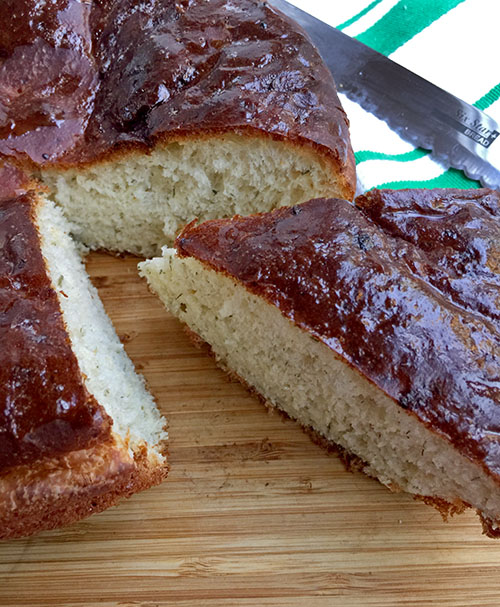 [I] wonder sometimes if casserole breads have gone the way of the casserole. You don’t hear much about them anymore, as if they’ve fallen into the category of “retro,†and lapsed into the rare recipe collection to be mused upon as a charming trend of yesteryear. If you’ve ever made a casserole bread — a good one — you’ll question this even more. A batter-style bread requiring no kneading and raised and baked in a greased casserole dish…for those who want to make homemade bread, you couldn’t ask for anything much easier or delicious.
[I] wonder sometimes if casserole breads have gone the way of the casserole. You don’t hear much about them anymore, as if they’ve fallen into the category of “retro,†and lapsed into the rare recipe collection to be mused upon as a charming trend of yesteryear. If you’ve ever made a casserole bread — a good one — you’ll question this even more. A batter-style bread requiring no kneading and raised and baked in a greased casserole dish…for those who want to make homemade bread, you couldn’t ask for anything much easier or delicious.
I question my own infrequency making this type of bread. Years ago, I remember trying a great one that had cottage cheese, real grated onions and fresh dill. It smelled like heaven when it was baking, and was moist and tasted even better than it smelled. It was during a summer that I was focused on trying to employ all the senses (more on this will be revealed in a later writing project), and this dill bread, fondly remembered, filled the bill. When summer rolls around again, I recall that time and return to that bread, or, a version of it, with the tastes of the season, particularly dill.
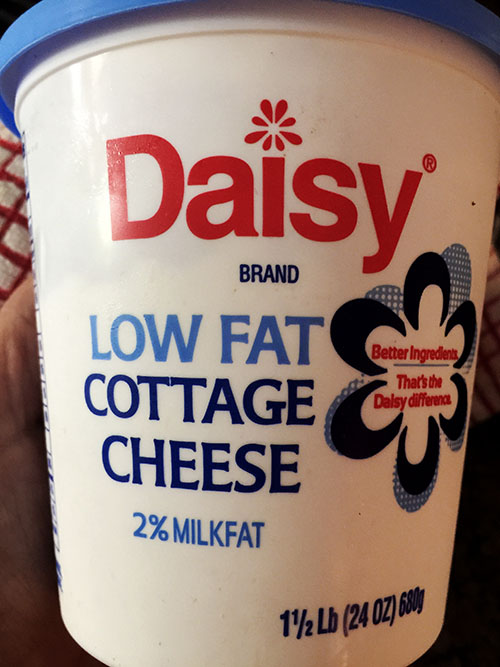 Tons of recipes on the web and in cookbooks exist for this type of bread, but I believe it originated — or, at least, had its heyday in 1960 when Leona Schnuelle of Crab Orchard, Neb., won the Grand Prize at the Pillsbury Bake-Off for her Dilly Casserole Bread (if you look at the Pillsbury winner list from over the years, you’ll recognize a lot of other familiar recipes, from the Tunnel of Fudge Cake to Peanut Blossoms cookies, that have become oft-made favorites in many bakers’ recipe go-to’s). But variations of the recipe pop up everywhere. I’m sure you’ve seen it not only as “casserole bread,†but as “cottage bread†or “dilly bread.†Or other versions including bacon and cheese. It almost always uses cottage cheese (perhaps a brand of said cheese originated the recipe?), lending the softness to the batter, along with a moist texture and unique tang to the finished bread. These yeast breads, too batter-y to knead, are stirred up and baked in casserole rounds or heat-proof bowls — I have even seen a version baked in foil-lined flower pots.
Tons of recipes on the web and in cookbooks exist for this type of bread, but I believe it originated — or, at least, had its heyday in 1960 when Leona Schnuelle of Crab Orchard, Neb., won the Grand Prize at the Pillsbury Bake-Off for her Dilly Casserole Bread (if you look at the Pillsbury winner list from over the years, you’ll recognize a lot of other familiar recipes, from the Tunnel of Fudge Cake to Peanut Blossoms cookies, that have become oft-made favorites in many bakers’ recipe go-to’s). But variations of the recipe pop up everywhere. I’m sure you’ve seen it not only as “casserole bread,†but as “cottage bread†or “dilly bread.†Or other versions including bacon and cheese. It almost always uses cottage cheese (perhaps a brand of said cheese originated the recipe?), lending the softness to the batter, along with a moist texture and unique tang to the finished bread. These yeast breads, too batter-y to knead, are stirred up and baked in casserole rounds or heat-proof bowls — I have even seen a version baked in foil-lined flower pots.
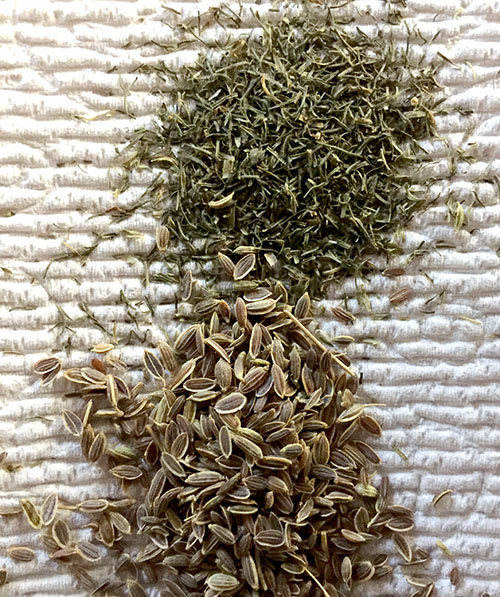 Some of the dill versions of the recipes call for dill seed; some call for dill weed (and some of you — if you grew up in the 1970s or ’80s — might be snickering at this term as I do…as it was one ‘acceptable’ moniker for any other kid acting like a jerk); some recipes call for both. I have found that you can use either successfully, even though on some recipe “advice†sites, it is recommended to not substitute one for the other.
Some of the dill versions of the recipes call for dill seed; some call for dill weed (and some of you — if you grew up in the 1970s or ’80s — might be snickering at this term as I do…as it was one ‘acceptable’ moniker for any other kid acting like a jerk); some recipes call for both. I have found that you can use either successfully, even though on some recipe “advice†sites, it is recommended to not substitute one for the other.
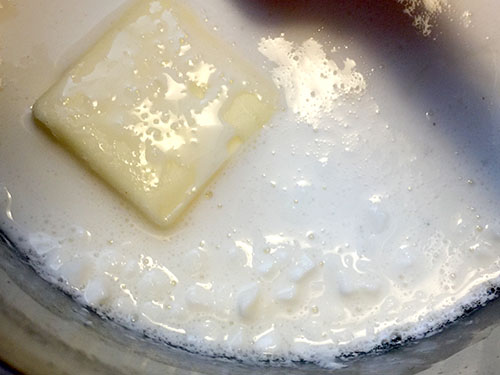
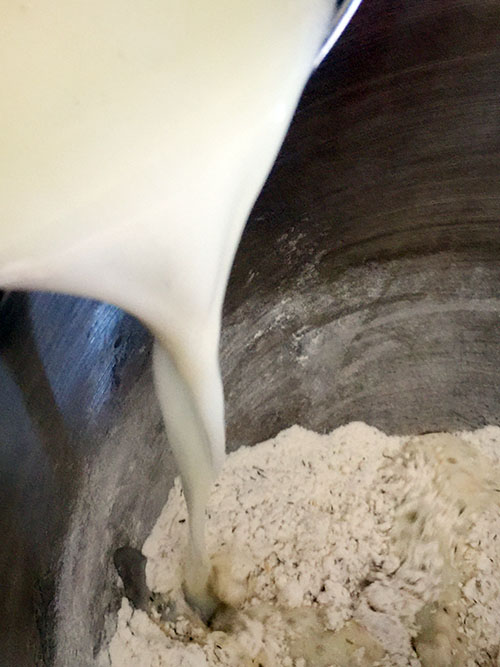 Cottage cheese, water and butter are heated in a saucepan, then liquids, along with an egg, are added to a mix of flour, yeast, sugar, salt, baking soda, dried minced onion and dried dill (I used weed), and all is beaten throughly with an electric mixer.
Cottage cheese, water and butter are heated in a saucepan, then liquids, along with an egg, are added to a mix of flour, yeast, sugar, salt, baking soda, dried minced onion and dried dill (I used weed), and all is beaten throughly with an electric mixer.
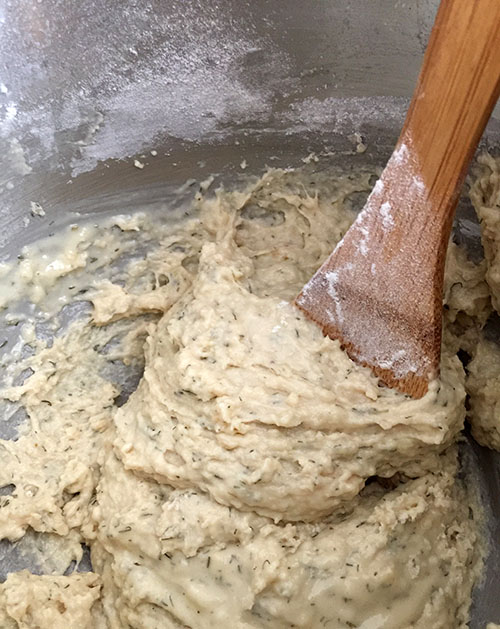 Additional flour is stirred in by hand until the batter is semi stiff, almost too hard to stir, but too sticky to knead.
Additional flour is stirred in by hand until the batter is semi stiff, almost too hard to stir, but too sticky to knead.
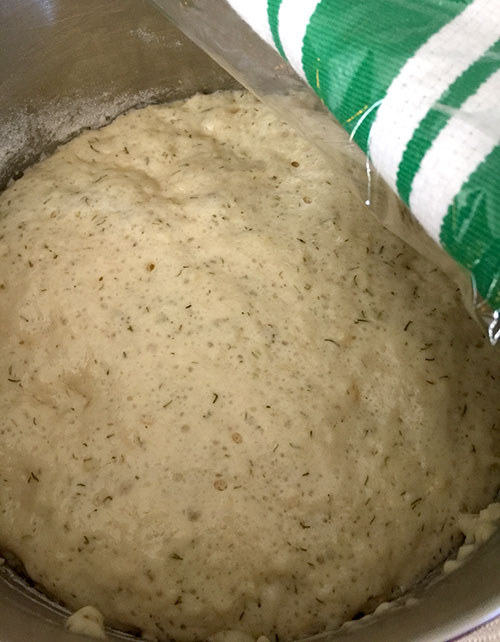 The bowl of batter is then covered and allowed to rise for about an hour. Mine lifted significantly during the rising time to form a very bubbly, active-looking dough.
The bowl of batter is then covered and allowed to rise for about an hour. Mine lifted significantly during the rising time to form a very bubbly, active-looking dough.
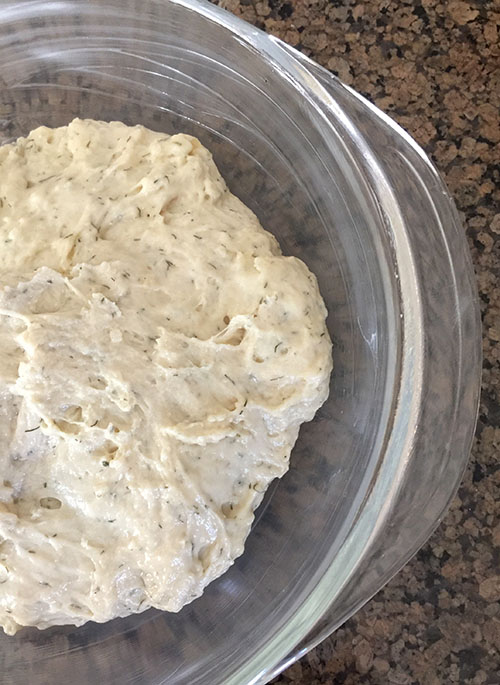
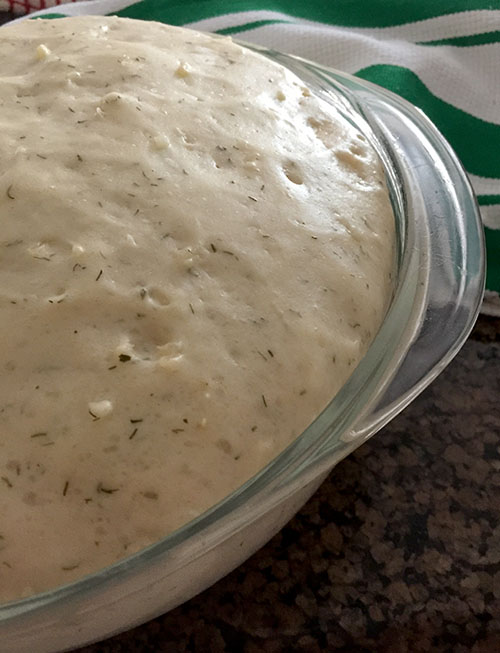 The bread batter is spooned into a greased (I used shortening) 1-1/2- to 2-quart casserole dish, then covered and allowed to rise again for another 30 to 45 minutes. I found it bloomed up beautifully and rose to fill the casserole dish and slightly above.
The bread batter is spooned into a greased (I used shortening) 1-1/2- to 2-quart casserole dish, then covered and allowed to rise again for another 30 to 45 minutes. I found it bloomed up beautifully and rose to fill the casserole dish and slightly above.
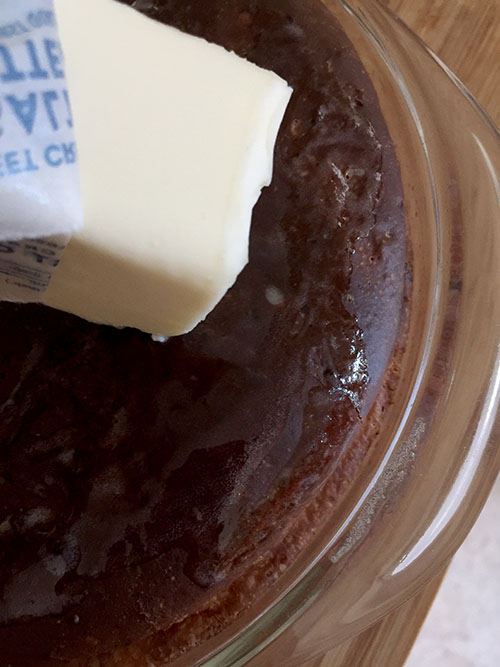 Baking to a deep umber color, the bread tapped hollow when it was done. The recipe recommended brushing the top of the bread with melted butter…I used my mom’s method of taking a stick of butter and rubbing the loaf’s surface.
Baking to a deep umber color, the bread tapped hollow when it was done. The recipe recommended brushing the top of the bread with melted butter…I used my mom’s method of taking a stick of butter and rubbing the loaf’s surface.
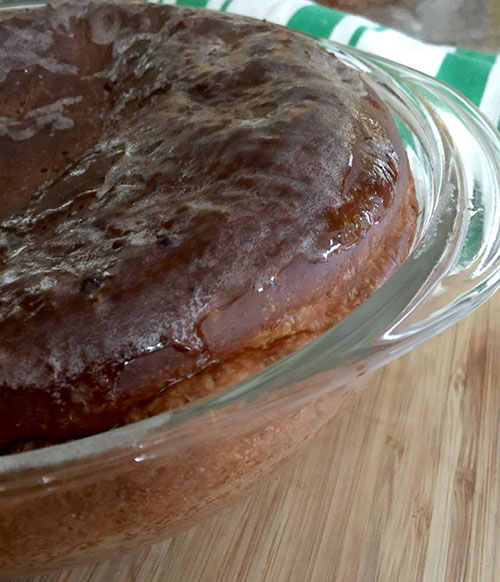 I did find that my bread, a little scuffle-like, sunk slightly in the middle. I did not let this aesthetic sink me, however. It was still a beautiful loaf, and I was eager to sample.
I did find that my bread, a little scuffle-like, sunk slightly in the middle. I did not let this aesthetic sink me, however. It was still a beautiful loaf, and I was eager to sample.
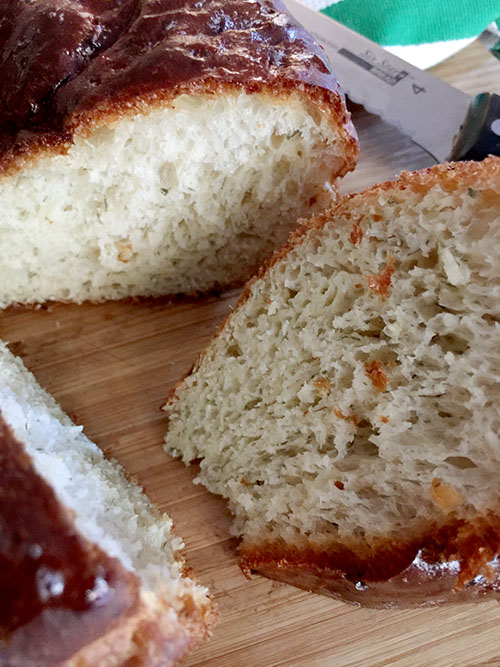 This is one of the most flavorful and delicious breads I’ve made. Moist, but light and airy, with the garden-y tastes of onion and dill that are just enough and do not overpower. The round — cut in wedges instead of slices — disappeared in no time. But I was left with the sense memory and the determination to make it again. Soon.
This is one of the most flavorful and delicious breads I’ve made. Moist, but light and airy, with the garden-y tastes of onion and dill that are just enough and do not overpower. The round — cut in wedges instead of slices — disappeared in no time. But I was left with the sense memory and the determination to make it again. Soon.
Dilly Casserole Bread
From pillsbury.com
Makes 1 loaf
2 to 2 2/3 cups all-purpose flour
2 tablespoons sugar
2 to 3 teaspoons instant minced onion
2 teaspoons dill seed
1 teaspoon salt
1/4 teaspoon baking soda
1 pkg. active dry yeast
1/4 cup water
1 tablespoon margarine or butter
1 cup small curd cottage cheese
1 egg
2 teaspoons margarine or butter, melted
1/4 teaspoon coarse salt, if desired.
In large bowl, combine 1 cup flour, sugar, lion, dill seed, 1 teaspoon salt, baking soda and yeast; mix well.
In small saucepan, heat water, 1 tablespoon margarine or butter and cottage cheese until very warm (120 to 130 degrees F). Add warm liquid and egg to flour mixture; blend at low speed until moistened. Beat 3 minutes at medium speed.
By hand, stir in the remaining 1 to 1 2/3 cup flour to form a stiff batter. Cover loosely with greased plastic wrap and cloth towel. Let rise in warm place (80 to 85 degrees F) until light and doubled in size, 45 to 60 minutes.
Generously grease 1 1/2 to 2-quart casserole. Stir down batter to remove all air bubbles. Turn into greased casserole. Cover; let rise in warm place until light and doubled in size, 30 to 45 minutes.
Heat oven to 350 degrees F. Uncover dough, Bake 30 to 40 minutes or until loaf is a deep golden brown and sounds hollow when lightly tapped. If necessary, cover with foil to prevent over browning. Remove from casserole; place on wire rack. Brush loaf with melted margarine; sprinkle with coarse salt. Cool 15 minutes. Serve warm or cool.
Blogger’s Note: I used dried dill weed (*snicker*) in this recipe rather than dill seed. I skipped the sprinkling of salt as a finish.